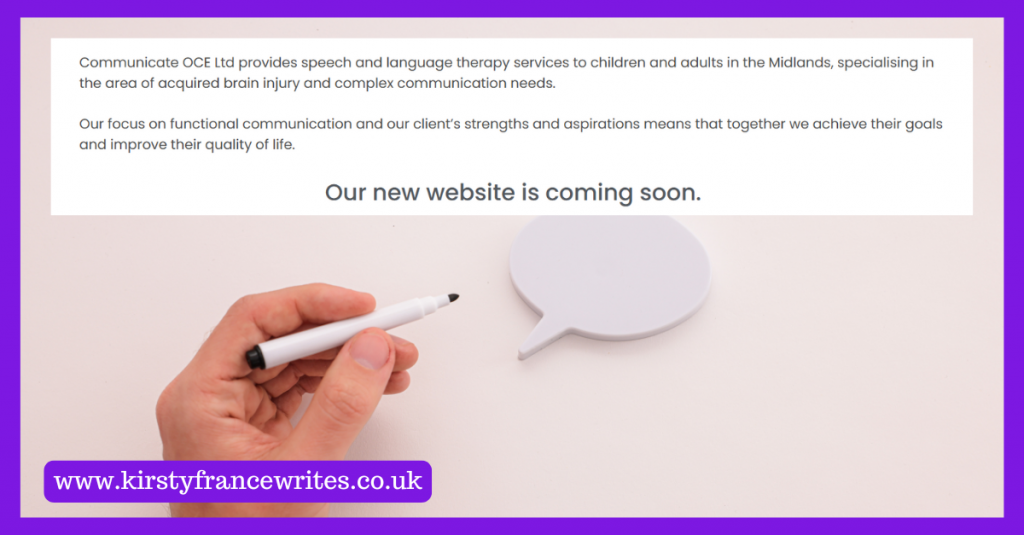
Making changes in your business can take time, and it’s wise to reflect as you go through the process. When I first met Heather Sanders from Communicate OCE, she had already thought long and hard about whether she needed a website and what she wanted to achieve. Here’s how we worked together to write website copy for her new speech therapy site.
Heather’s business
Heather works with her clients to provide functional speech therapy. She regularly works with clients who have experienced catastrophic brain injuries, so they often have complex needs. We had met at networking events, but our first meeting to discuss her website was the first time I’d heard her talk about her business in detail. Her love for her work was infectious. She described working with young people who needed to learn how to speak in real-life situations, from catching a bus on their own to going shopping or accessing dating apps. She carries out assessments at home, school or any environment her clients find challenging.
Communicate OCE’s website copy needed to speak to two different audiences. They work with professionals such as solicitors, whose clients have often been involved in catastrophic accidents. While Heather doesn’t prepare expert reports for legal proceedings, she frequently works with clients involved in claims. The website also needed to speak to parents whose children need support.
The first draft
During our initial chat, Heather and I discussed the information her website needed to include and how we’d structure it to make it clear which sections were for which clients. OCE is typically fully booked via referrals, so they needed a brochure website where potential clients could learn more about the business and the team behind it.
We agreed on what pages I would write, and Heather sent me more information about some points we discussed. Then, I got to work on the first draft.
Feedback
One of the reasons I started my business was because I wanted to have the flexibility to spend time with my family and go on holiday without waiting for the boss to approve a leave request. This means that I often end up working with people who have the same priorities. After our initial chat and the first draft, Heather and I both went on holiday with our families, and our lives got hectic in various ways. We kept in touch so we both knew what timeline was realistic.
The great thing was that by the time Heather emailed me with her feedback, she’d had time to sit and look at it properly without feeling rushed. She could see how the copy looked on the page and realised there were a few things she wanted to expand on.
Live edits
Sometimes, the best way to incorporate a client’s feedback into your copy is to get them on a call and make changes as you talk. You won’t always get the final version that way. Sometimes, I need to go away and think about the best way to approach things. Live edits are great for discussing how a word or phrase comes across and how readers might interpret it. Sometimes, an initial conversation gets lost in translation and needs adjusting to reflect reality.
That’s exactly what Heather and I did over Zoom. I could make suggestions, and she could clarify what specific terms mean in speech therapy circles. It’s a lot more fun than endless emails. After our call, I sent Heather the final pages and here’s what she said:

Ready for a chat?
If you’re looking for a copywriter to create your website copy or work on another project, let’s have a chat. When you work with me, I’ll get to know you and your business and write content that sounds like the best version of you and that your audience will love. Email me to arrange a chat or book a Zoom call to find out more.
Alternatively, sign up for my mailing list, and I’ll send you a free copy of my eBook with fifty (yes, 50) topic ideas for your marketing as a thank you.








